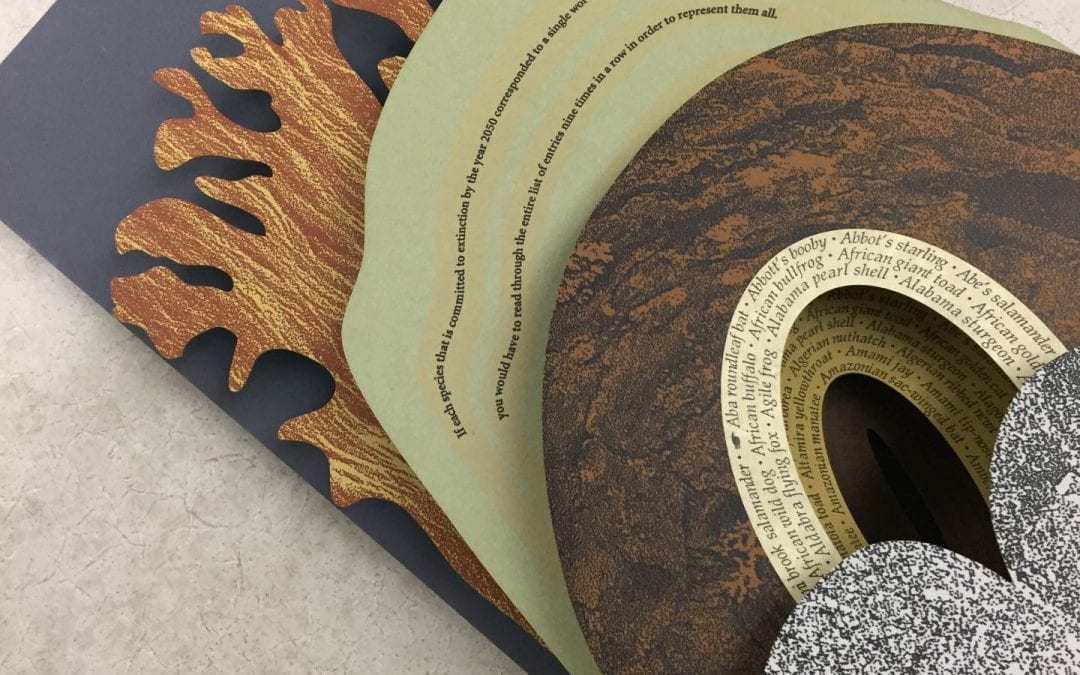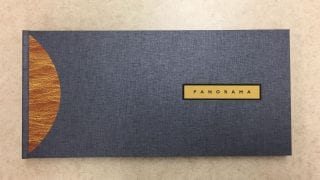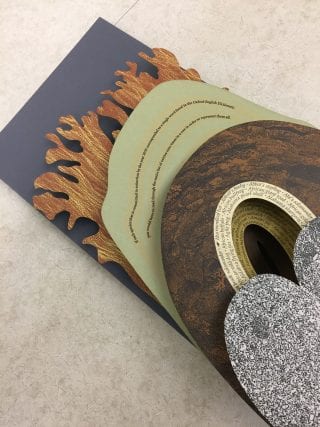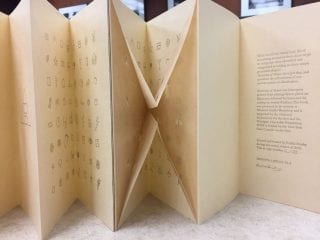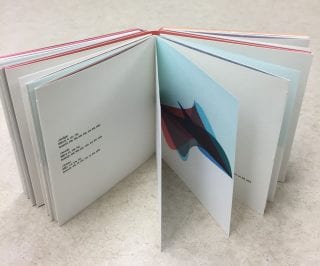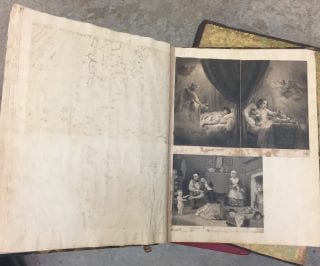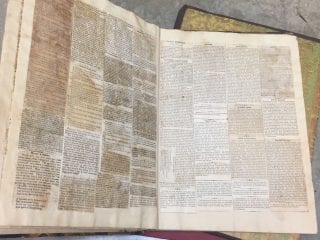An exhibit currently on display on the lobby level of Mullins Library, “The Art of the Book, The Book as Art,” explores the ways that artists extend the format of the book through the incorporation of visual elements. While there are many techniques that artists, authors, and creators use to create hybrid book formats, this exhibit focuses on just one: the incorporation of visual elements to create physical objects that are both information containers and works of art.
Exhibit spaces present challenges for displaying materials, including space limitations that restrict the number and size of the objects that can be shown. In this post, we highlight some of the objects that almost – but didn’t quite – fit into the case.
Book artist Julie Chen juxtaposes pop-ups and movable elements with letterpress printing. The physical format of the books she creates often reflects on the content as well. Panorama, for example, measures an impressive five feet wide when it is fully opened. Its size is a reflection of its content: this artists’ book provides commentary on climate change and reflects on the enormity of the problem. Its size also, however, precluded including it in the exhibit case: the case simply isn’t large enough to hold the book when it is open.
- Cover view of Julie Chen’s Panorama
- Interior view of Panorama, displaying the many layers of image and text inside the book
With a focus on the environment and systems of scientific classification, Taxonomy of Shapes by Radha Pandey incorporates hand-drawn icons that represent natural and man-made environmental elements. Pandey created hand- and die-cut paper overlays in the form of geometric shapes, and these shapes in turn organize the content of the printed book. As the images below illustrate, the structure of the book is intricate, and the delicate paper with its cut-outs rewards close investigation.
Fibre Libre, created by 15 artists at the University of Alabama’s Open Edition project, illustrates the inseparable relationship between artist book and form. The book’s accordion-fold binding allows for a removable spine that, in turn, allows the reader to manipulate the pages from different sides. The book intentionally combines traditional book arts processes, like papermaking and letterpress printing, with contemporary processes, including digital image manipulation.
The physical exhibit in Mullins Library focuses exclusively on professional published books. Despite this focus, readers can also be participants in the creation of hybrid book formats. Some readers doodle in the margins of their books, adding their own commentary to the text through the addition of their illustrations. Scrapbooks are also an example of the ways in which readers have extended the information objects found in their lives by selecting, arranging, and annotating found texts, including recipes, illustrations, poems, and stories from newspapers topics of interest. Some scrapbookers focused on creating visually appealing pages in their books; other focused more on the information contained therein.
Mrs. Carrie E. Senham’s scrapbook, preserved as part of the Washington County Historical Society Collection, provides a look at a common scrapbook format from the latter half of the 19th century. Mrs. Senham compiled her scrapbook in 1864, and it features clippings from newspapers and magazines that she read and enjoyed, including recipes, home remedies, household hints, and images. As Mrs. Senham did not annotate her scrapbook, the 21st century reader is left to interpret the images without context.
- The images in Mrs. Senham’s scrapbook, devoid of commentary
- This spread from Mrs. Senham’s scrapbook shows the types of text she collected and saved.
While we are able to provide additional examples of hybrid book formats here on the blog, there is no substitute for seeing these books, and others like them, in person. To get a closer look, visit Special Collections on the first floor of Mullins Library.
